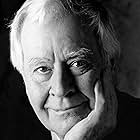Sherman's troops march through Georgia and the Carolinas; Petersburg and Richmond fall to Grant's army; Lee surrenders at Appomattox, Va.Sherman's troops march through Georgia and the Carolinas; Petersburg and Richmond fall to Grant's army; Lee surrenders at Appomattox, Va.Sherman's troops march through Georgia and the Carolinas; Petersburg and Richmond fall to Grant's army; Lee surrenders at Appomattox, Va.
Photos
Julie Harris
- Mary Chestnut
- (voice)
Garrison Keillor
- Walt Whitman
- (voice)
- …
George Black
- Robert E. Lee
- (voice)
Christopher Murney
- Pvt. Elijah Hunt Rhodes
- (voice)
- (as Chris Murney)
Charles McDowell
- Pvt. Sam Watkins
- (voice)
- (as Charley McDowell)
Horton Foote
- Jefferson Davis
- (voice)
Philip Bosco
- Horace Greeley
- (voice)
- …
- Director
- Writers
- All cast & crew
- Production, box office & more at IMDbPro
Storyline
Did you know
- ConnectionsReferences Patton (1970)
- SoundtracksAshokan Farewell
Composed by Jay Ungar
Featured review
The final 10 minutes or so of this episode, the discussing of what happened when Generals Grant and Lee met in Appomattox for the surrender of the war talks is fantastic. The description of these two men was so dramatic and so eloquently expressed that it made up for the unpleasantness in the first hour of this eighth episode.
Much of that unpleasantness has to do with the total destruction of Atlanta and much of the state of Georgia. No matter what side you take, this is tough to hear described. War seems to bring out the best and worst in men. There are some people here who did so many cruel, despicable deeds it would make you sick. There are also, of course, many incredible brave and noble men and women. Watching this, I discovered why so many people are fascinated with this part of American history and frankly - right or wrong - I can see why bitterness in the South lasted so long.
However, as it is pointed out here, General Sherman, who led this swath through Georgia had a purpose: to make war so detestable that the South would think long and hard, or perhaps never consider, ever doing battle again. He knew war was "all hell," and expressed it numerous times.
Meanwhile, we hear about what else is going on in 1865, this last year of the war; other battles, other triumphs and heartbreaks, about the slaves celebrating and some not quite sure what is safe to do. We also briefly hear about John Wilkes Booth and his hatred for Lincoln and himself. That story, in depth, I believe is on the last tape in this Ken Burns Civil War made-for-television event.
As in Burns' baseball set and other projects, he seems to have his favorites, people who get an inordinate amount of "air time." One in this series has been Mary Chestnut, who is frequently quoted. One begins to wonder why she gets so much "ink." I'm guessing one of the answers is simply because she kept such a detailed diary of the war.
Along a lighter note, I am constantly amazed how a long production like this, with no moving pictures, can look so good visually in spots. The color shots, from recent times, of the South are the prettiest. This nine-part series not only is audibly fascinating, but visually as well. The Civil War pictures, of course, were all black-and-white but at least we have a pictured record of the war. Some of those pictures, however, are pretty harsh...but that's the horrors of war.
Much of that unpleasantness has to do with the total destruction of Atlanta and much of the state of Georgia. No matter what side you take, this is tough to hear described. War seems to bring out the best and worst in men. There are some people here who did so many cruel, despicable deeds it would make you sick. There are also, of course, many incredible brave and noble men and women. Watching this, I discovered why so many people are fascinated with this part of American history and frankly - right or wrong - I can see why bitterness in the South lasted so long.
However, as it is pointed out here, General Sherman, who led this swath through Georgia had a purpose: to make war so detestable that the South would think long and hard, or perhaps never consider, ever doing battle again. He knew war was "all hell," and expressed it numerous times.
Meanwhile, we hear about what else is going on in 1865, this last year of the war; other battles, other triumphs and heartbreaks, about the slaves celebrating and some not quite sure what is safe to do. We also briefly hear about John Wilkes Booth and his hatred for Lincoln and himself. That story, in depth, I believe is on the last tape in this Ken Burns Civil War made-for-television event.
As in Burns' baseball set and other projects, he seems to have his favorites, people who get an inordinate amount of "air time." One in this series has been Mary Chestnut, who is frequently quoted. One begins to wonder why she gets so much "ink." I'm guessing one of the answers is simply because she kept such a detailed diary of the war.
Along a lighter note, I am constantly amazed how a long production like this, with no moving pictures, can look so good visually in spots. The color shots, from recent times, of the South are the prettiest. This nine-part series not only is audibly fascinating, but visually as well. The Civil War pictures, of course, were all black-and-white but at least we have a pictured record of the war. Some of those pictures, however, are pretty harsh...but that's the horrors of war.
- ccthemovieman-1
- Aug 15, 2007
- Permalink
Details
Contribute to this page
Suggest an edit or add missing content














